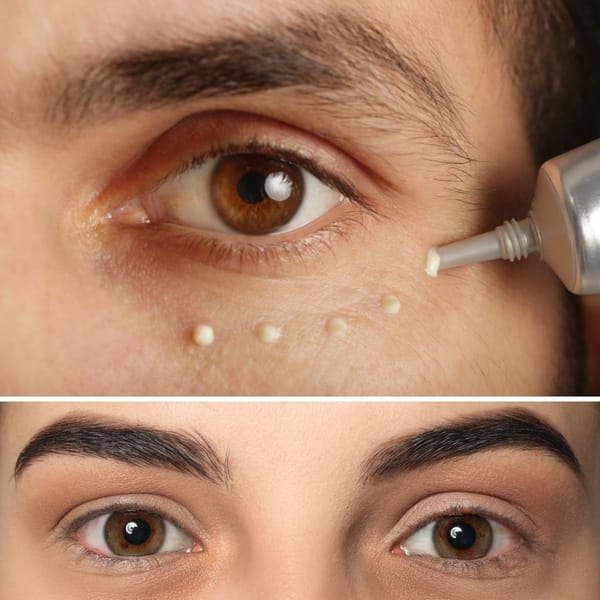Key Takeaways:
- Hand creams typically have a thicker consistency and provide intense hydration, ideal for dry or cracked skin.
- Hand lotions are lighter, absorb quickly, and are suitable for everyday use to maintain moisture without a greasy residue.
- Understanding the difference between hand cream and hand lotion can help you choose the right product for your skin type and needs.
Caring for our hands is a crucial part of our daily skincare routine, but with so many products on the market, it can be challenging to understand which one is right for you. Two popular options are hand creams and hand lotions, and while they may seem similar, they serve different purposes and are suited to different skin types and conditions. In this article, we'll explore the main differences between these two products, helping you make an informed decision for your skin's health.
Understanding the Basics: Creams vs. Lotions
When it comes to moisturizing products, the terms 'cream' and 'lotion' are often used interchangeably, but they are not the same product. The primary difference lies in their consistency and the concentration of oils and water they contain. Hand creams are generally a lot thicker and richer in texture, providing a protective barrier that is particularly beneficial for dry, delicate skin or during colder months. They often contain a higher percentage of oils, which can offer more intense hydration and protection for chapped hands.
On the other hand, hand lotions have a lighter, thin consistency that is easily absorbed by the skin. They are designed to hydrate without leaving a greasy residue, making them a good choice for those with normal to slightly dry skin. Lotions typically have a high water content, which helps to deliver moisture to the skin while maintaining a non-greasy feel.
The Role of Ingredients
The ingredients in hand creams and hand lotions play a significant role in their different benefits. Hand creams often include components like shea butter, lactic acid, and other oils that are known for their ability to provide a rich texture and intense hydration. These ingredients help to create a thicker cream that can soothe and repair dry or cracked skin, even under harsh weather conditions.
In contrast, hand lotions may contain similar ingredients but in lower concentrations. They are formulated to be light and quick-absorbing, offering hydration without clogging pores. This makes them suitable for use throughout the day, as they can be applied without interfering with daily activities.
For Dry Skin: Hand Creams
Individuals with dry skin or those experiencing harsh cold weather will find that hand creams can offer the intense moisture needed to combat dryness. The thick consistency of hand creams is designed to create a protective barrier that locks in moisture, which is essential for preventing and treating dry hands. This barrier also shields the delicate skin on the hands from further damage caused by environmental factors.
For Everyday Use: Hand Lotions
If you're looking for a product that can be used frequently throughout the day, hand lotions are the go-to option. Their light texture ensures that they can be applied often without leaving hands feeling greasy or slippery. This makes them ideal for maintaining skin hydration, especially for those with a skin type that does not require the intense moisture that hand creams provide.
Seasonal Considerations
During colder months, the skin on our hands can become particularly vulnerable to becoming dry and chapped. In such conditions, a thicker cream can provide the extra protection and hydration needed. Conversely, in warmer weather or for those with naturally oily skin, a lighter lotion may be sufficient to keep hands moisturized without feeling heavy.
Choosing the Right Product for You
Selecting between hand cream and hand lotion ultimately comes down to understanding your skin type and needs. If you have delicate skin that is prone to dryness or if you are dealing with cracked skin, a hand cream with its thicker consistency and richer ingredients will likely serve you best. For those with normal skin or who prefer a non-greasy product for regular use, hand lotions with their lighter consistency are more appropriate.
Summary
The main difference between hand cream and hand lotion lies in their consistency, ingredients, and the level of moisture they provide. Hand creams are thicker and offer a protective barrier ideal for dry or damaged skin, while hand lotions are lighter and suitable for everyday hydration. By recognizing your skin's needs and the conditions you're exposed to, you can choose the right product to keep your hands soft, healthy, and well-moisturized.
FAQ Section
Q: Can I use hand lotion on my face? A: It's not recommended to use hand lotion on your face as it may not be formulated for the more delicate and sensitive skin on your face. It's better to use a product specifically designed as a face cream.
Q: Should I use hand cream or lotion for oily skin? A: For oily skin, a hand lotion with a lighter texture is generally more suitable as it provides hydration without adding excess oils to the skin.
Q: How often should I apply hand cream or lotion? A: The frequency of application depends on your skin type and the current weather conditions. Hand lotion can be applied throughout the day as needed, while hand cream is typically used less frequently, often after washing hands or before bed, to provide intense hydration.







